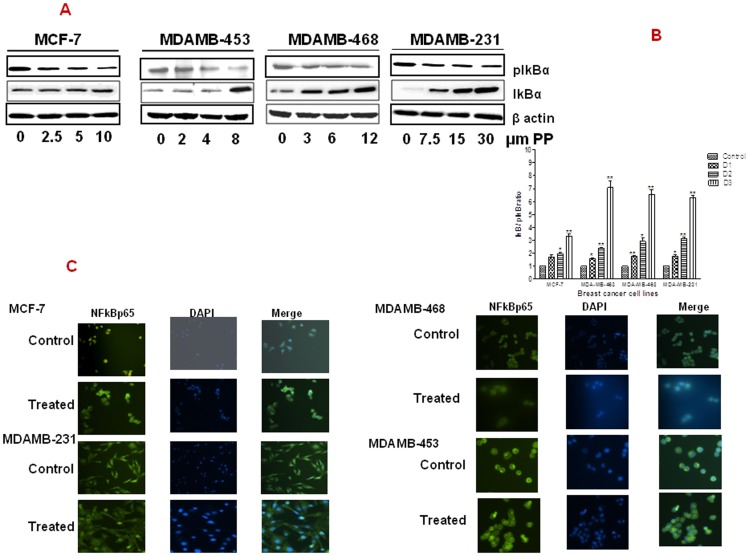Figure 4. Panepoxydone inhibited NF-kB:
(A) Immunoblotting of IkB and pIkBα showed accumulation of IkBα (inactive) and down-regulation of pIkBα (active) in PP treated breast cancer cells. This indicates the potential of PP in keeping NF-kB in the active state. (B) Bar diagram indicate the increased IkB/pIkB ratio in all breast cancer cells after PP treatment. * indicates statistically significant difference between PP treated and untreated cells at p<0.05 (*), p<0.01(**), and, p<.001(***) levels by student's t-test. (C) Localization of NF-κB was done on MCF-7, MDAMB-231, MDAMB-468 and MDAMB-453 breast cancer cells that were fixed, permeabilized and labeled with anti-p65 subunit of NF-κB then nuclei were stained with DAPI. Controls cells were compared to cells treated with the top dose of PP (D3). Controls cells showed increased expression of NF- κB in the nucleus, whereas following treatment with PP, NF-κB accumulated in the cytoplasm, indicating decreased activity.

